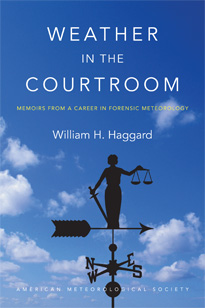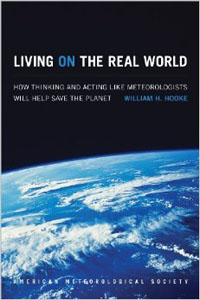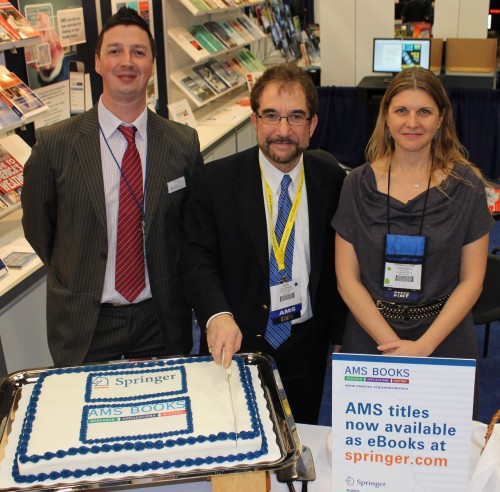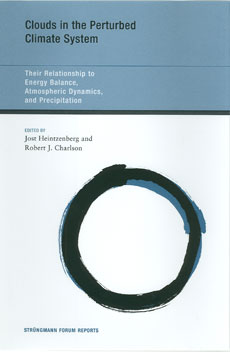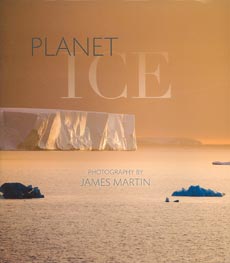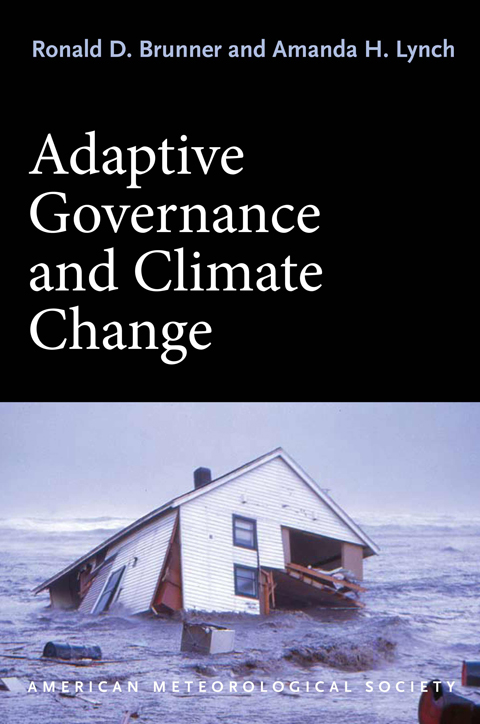Even tall tales have their facts, but in historical fiction the myriad factual details often far outshine the story itself. In the ever popular books of Laura Ingalls Wilder, the telling details turn out to be the truly epic—and real—weather of the past. Barbara Mayes Boustead (University of Nebraska—Lincoln) and her coauthors show us in a recent BAMS article that Wilder’s, The Long Winter, isn’t just good history wrapped into a great novel–it’s also valuable climate data.
The cold, snowy season of 1880-81 featured in The Long Winter was strikingly difficult across much of the Plains and Midwest. A number of accounts have referred to it as the “Hard Winter” or “Starvation Winter.” Wilder’s story, set in De Smet, Dakota Territory (present-day South Dakota; 60 km west of Brookings), is fiction, but it contains many verifiable facts about the weather.
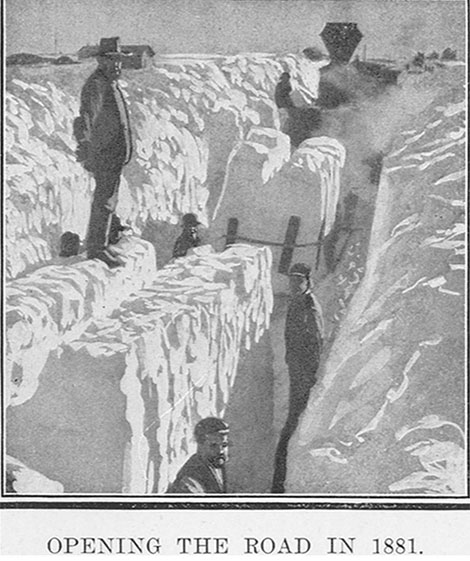 Boustead and co-authors Martha D. Shulski and Steven D. Hilberg set out to determine which parts of Laura’s stories are based in fact, and in the process, filled in the gap left by the absence of analysis or documentation in scientific literature about the Hard Winter of 1880-81. In the process, Boustead et al. show that the Hard Winter places recent severe winters, such as 2013-14, into context.
Boustead and co-authors Martha D. Shulski and Steven D. Hilberg set out to determine which parts of Laura’s stories are based in fact, and in the process, filled in the gap left by the absence of analysis or documentation in scientific literature about the Hard Winter of 1880-81. In the process, Boustead et al. show that the Hard Winter places recent severe winters, such as 2013-14, into context.
The winter began early, with a blizzard in eastern South Dakota and surrounding areas in mid October. Following a respite thereafter, wintry conditions returned by mid-November, followed by a number of snow and potential blizzard events in December. After a cold but relatively snow-free period, storm frequency increased from early January through February, producing snow almost daily in eastern South Dakota. In March, most days remained below freezing, though snowfall frequency decreased. Cold conditions continued into the first half of April. The BAMS article goes into detail describing why the winter of 1880-81 was so severe.
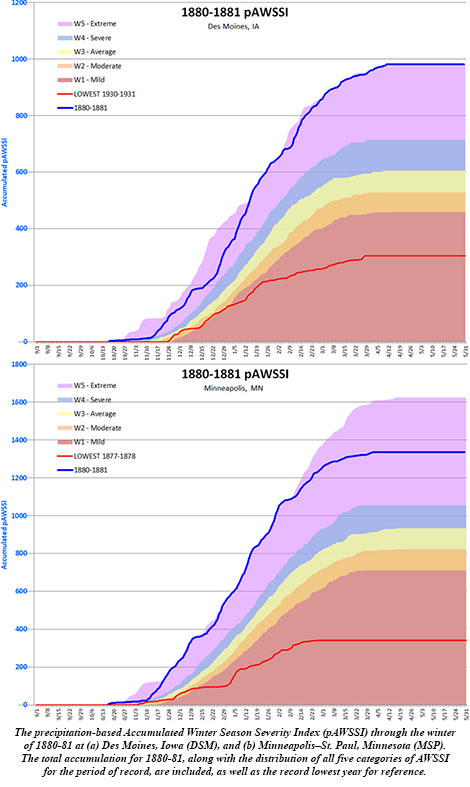 BAMS asked a few questions of Boustead to gain insight into her research. A sampling of answers are below:
BAMS asked a few questions of Boustead to gain insight into her research. A sampling of answers are below:
BAMS: What would you like readers to learn from your article?
Barbara Mayes Boustead: Literature and other creative work can provide windows into past weather events and climates – including everything from documentary evidence to the impacts of those events on individuals and communities. We can connect those works to other historical weather data sources, from observations to reanalysis data, to reconstruct what occurred during these noted events, and why. By researching weather and climate related to a popular-interest subject like Laura Ingalls Wilder and the Little House stories, I have been able to reach audiences that otherwise might not have been so engaged, sparking interest in weather and climate by presenting it through Laura’s perspective.
BAMS: How did you become interested in investigating the weather of Wilder’s book?
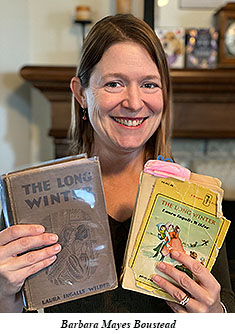 Barbara Mayes Boustead: The Long Winter research began over a decade ago as I reread the book as a “comfort read” on the tail end of a winter, reminding myself that even the longest winters do eventually end. I’ve been reading Laura Ingalls Wilder’s books since I was in elementary school, and I had always wondered if the winter was really as Wilder had described it. And then I got to thinking – I am a meteorologist, and I have the tools to look it up! The deeper I dug, the more that my questions led to more questions. I especially got excited as I found data that verified much of the weather that Wilder had described. And I knew I had found a resonant topic when I presented the work at a conference called LauraPalooza in 2010 (it’s real and it’s serious!) and was overwhelmed with questions and discussion following my presentation.
Barbara Mayes Boustead: The Long Winter research began over a decade ago as I reread the book as a “comfort read” on the tail end of a winter, reminding myself that even the longest winters do eventually end. I’ve been reading Laura Ingalls Wilder’s books since I was in elementary school, and I had always wondered if the winter was really as Wilder had described it. And then I got to thinking – I am a meteorologist, and I have the tools to look it up! The deeper I dug, the more that my questions led to more questions. I especially got excited as I found data that verified much of the weather that Wilder had described. And I knew I had found a resonant topic when I presented the work at a conference called LauraPalooza in 2010 (it’s real and it’s serious!) and was overwhelmed with questions and discussion following my presentation.
BAMS: What got you initially interested in weather and, more importantly, these novels?
Barbara Mayes Boustead: It seems that many meteorologists started with either a memorable event or a fear of a weather phenomenon. I was in the latter group, afraid of thunderstorms in my preschool years. My mother and sister took me to the library so that I could read books about weather, hoping that understanding would help me conquer fear. I had plowed through all of the books in the library in about a year, and I was hooked! As for my interest in Laura Ingalls Wilder, I can again thank my mom and books. She purchased Little House on the Prairie for me at a garage sale when I was in first grade and ready for chapter books. I turned my nose up at it, but she encouraged me to give it a chance. I did, and of course, Mom knows best – I was hooked and plowed through the rest of the book series, too.
BAMS: What surprised you the most in doing this research?
Barbara Mayes Boustead: Laura Ingalls Wilder was an excellent weather observer. Having researched the winter of 1880-81 extensively, as well as the rest of the identifiable weather and climate phenomena throughout the Little House books, I found that while many elements of the books were fictionalized, she recounted weather and climate events with great accuracy. Almost every weather or climate detail in her books really did occur and usually occurred just as she described it. She occasionally moved some timelines around, but the events themselves were spot-on.
BAMS: What was the biggest challenge you encountered in the research?
Barbara Mayes Boustead: There were times during my research that I would have gone to great lengths to obtain true snowfall measurements from one of the observing sites near the area of interest, or to fill in the spatial gaps. Snowfall data just don’t exist for the central U.S. in the early 1880s.
BAMS: What’s next?
Barbara Mayes Boustead: Research into the weather and climate of Laura Ingalls Wilder’s books and life continues as I work to document other weather and climate events from her other books and stories. Given the popular interest in Laura Ingalls Wilder, some of the research is and will be written for broader audiences, providing a window into the world of science (meteorology and climatology) for non-specialists by standing on the shoulders of Laura Ingalls Wilder’s storytelling and characters. What began as a side project has transitioned into decades worth of research and storytelling! Her books include everything from tornadoes and hail storms to blizzards, droughts to floods, extreme cold to extreme heat. There is fodder for research for years to come!
